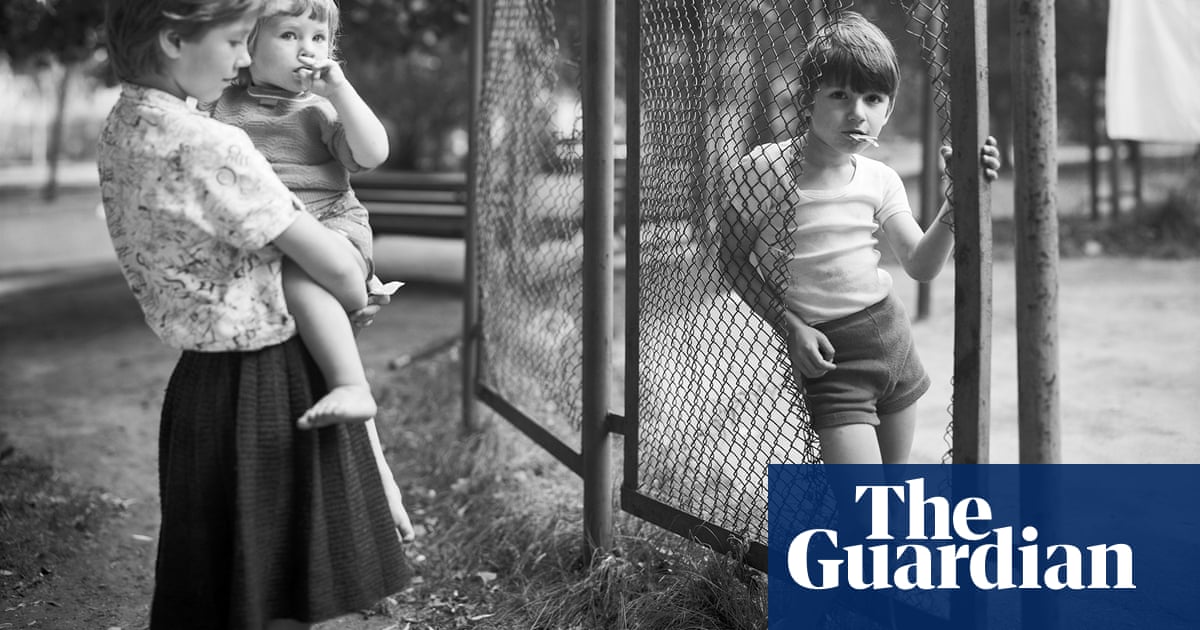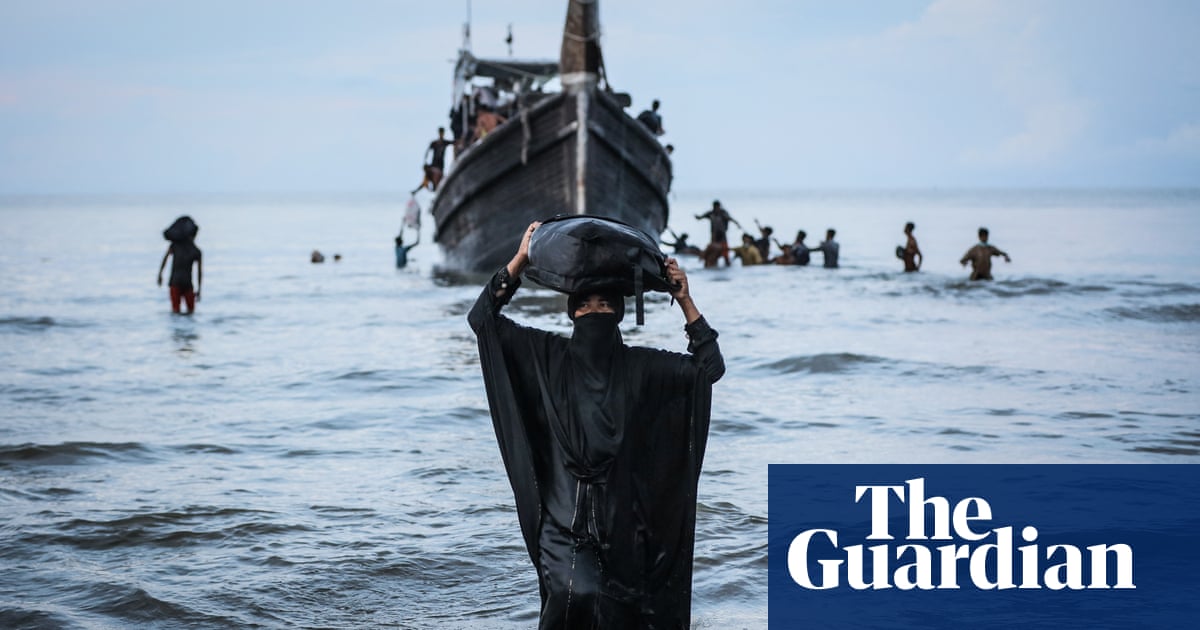
Born in the US to Ukrainian parents, Katherine Turczan grew up on a farm near the town of Paterson in New Jersey. “It only took three ballerina-like leaps to cross the lawn and reach my grandfather’s screen door,” she writes in her new photo book, From Where They Came, which features evocative monochrome portraits made in Ukraine between 1991 and 2008.
As a child, Turczan had listened intently to her grandfather’s stories of the country he had fled in the wake of the second world war. “My whole family were storytellers,” says Turczan, “and they created vivid descriptions of the life they had left behind. But my grandfather’s were the most vivid.” He told her how he had been wounded fighting the Bolsheviks, how his brother had died of typhoid during the conflict, and how he had made his way to the US, leaving behind his parents and siblings. As he talked, he would often sketch the remembered likenesses of his lost family members on scraps of paper torn from Svoboda, or Freedom, a newspaper for Ukrainian exiles.
Throughout her childhood, Turczan’s cultural links with her family’s homeland were strong: she attended Saturday school to learn Ukrainian and was part of a Ukrainian-American girls’ scout troupe – but it was her grandfather who was her most important influence. With hindsight, she sees a deep connection between the drawing lessons her grandfather gave her as a child – “his careful direction to observe things closely” – and her quiet, but penetrating, photographic gaze. “He was a folk artist, who worked on the railroads,” she says. “He collected roadkill, birds and squirrels, which he would hang on our barn door with old toys, wire and driftwood to make interesting compositions. Occasionally I would draw these still lifes. I had a long childhood of looking.”
In the summer of 1991, Turczan travelled to Ukraine for the first time, supported by a grant from Yale University. Her grandfather had died and both her parents had just been diagnosed with early stage dementia. “Looking back, I really did not know how to grapple with it all,” she says, quietly. “But I had always imagined what my life would have been like had my family stayed there.”
Her first, uncertain trip to her family’s homeland coincided with an attempt by hardline Soviet communists to oust Mikhail Gorbachev, the Russian reformist leader, in what became known as the August Coup. The attempted coup failed and, four months later, the USSR began to fragment. The Ukraine that Turczan held in her imagination from so many family stories, many of them marked by war and tragedy, was suddenly, almost unbelievably, an independent country with a palpable sense, as she puts it, “of things loosening up”.
From Where They Came, her collection of images, is the end result of her many subsequent visits to Ukraine over the following two decades. It is a deeply personal undertaking: portraits of the extended family she met there – the uncles, aunts, cousins she had heard so much about as a child. “I began in Lviv by contacting family I had there who are musicians and quite well known,” she says. “They completely understood what I was doing, and I began living with them.”
From there, she made contact with two other branches of her extended family, but also made portraits of other people she encountered and was instinctively drawn to. They included Orthodox nuns, whose convents were supported by donations from exiled Ukrainians, and the children of Chornobyl who attended secular summer camps far away from the zones of contamination caused by the 1986 nuclear disaster. “I was interested in women and children,” she says. “Women held the households together and the children were often the innocent victims of one tragedy after another.”
Her images are not tragic. But with their poised, quiet presence, they inevitably exude a melancholy sadness given the destruction wreaked by Russia’s invasion. They evoke a place that seems almost pre-modern, the sense of bucolic calmness now loaded with the weight of history. “It did feel to me then that the world I encountered on those early trips had not advanced in 30 or 40 years. Which in a way was true. The view is gentle and one of the main reasons to show the pictures now is to balance the dreadful images of horror and suffering coming out of Ukraine.”
Nevertheless, you cannot look at these images without wondering what has happened to the people in them. When I mention this, Turczan draws my attention to a portrait of a young girl in a car who, it turns out, is her cousin. Since the invasion, she has lived in Poland. They were reunited in Berlin last Christmas.
Turczan has made the aesthetic choice to present her images uncaptioned and her subjects unnamed. “What I like about it,” she says, “is that you are not distracted by all that information.” She uses a large format, 8x10 camera that is “a labour of love requiring patience and time” as well as “talking and negotiation” between her and her subjects.” Formally, her portraits have a similar aura to those of the great Judith Joy Ross, who, it turns out, encountered Turczan’s work at Yale and encouraged her with the project. “She is one of my heroes,” says Turczan, who also counts Andrea Modica and Lois Conner among her influences. “I like fearless women travelling alone with big cameras,” she says, laughing.
When she first arrived in Ukraine, she recalls that one of her relatives, on seeing her camera, said: “I wish you were a writer.” The inference was that a photograph could not go as deep into history, memory and human experience as a story. “I think there are different things that photography can do,” she counters. “My images are essentially a reflection of my own complex family history as well as my relationship to a country that, before I went there, was based on received information – so much so that, when I did go there for the first time, I felt like I was returning.”












